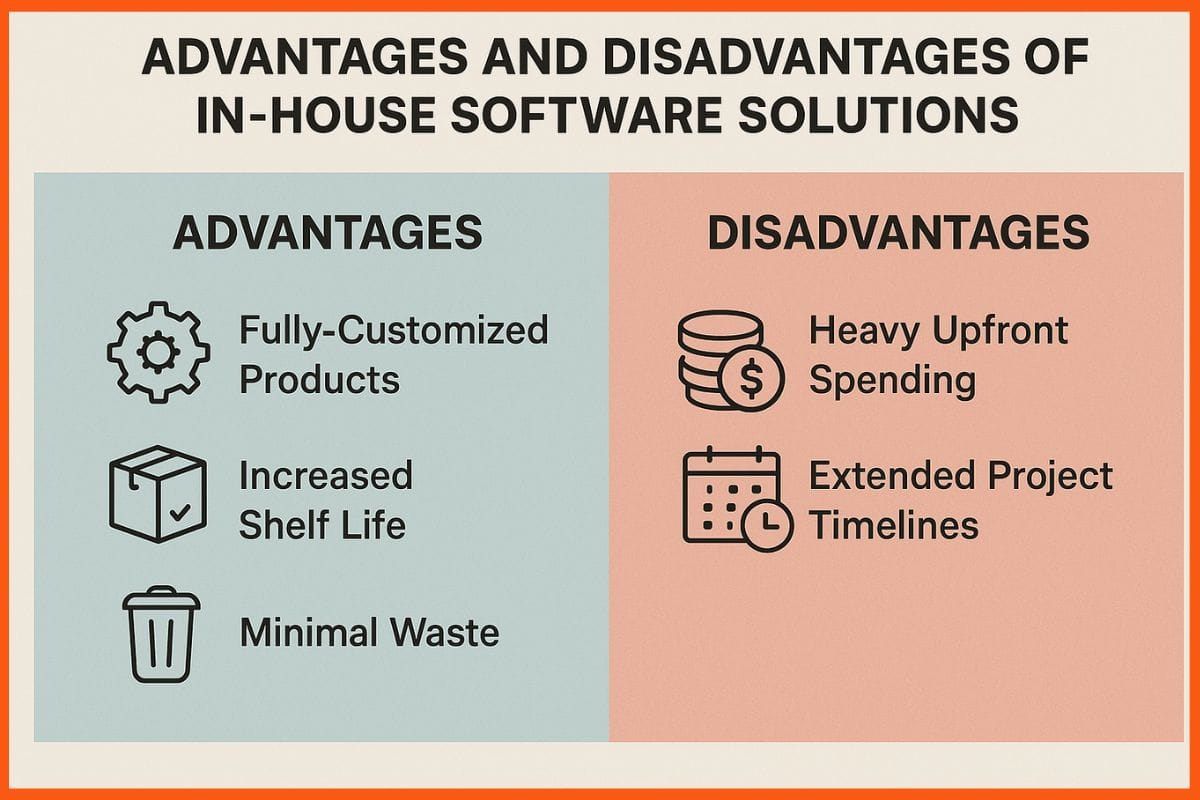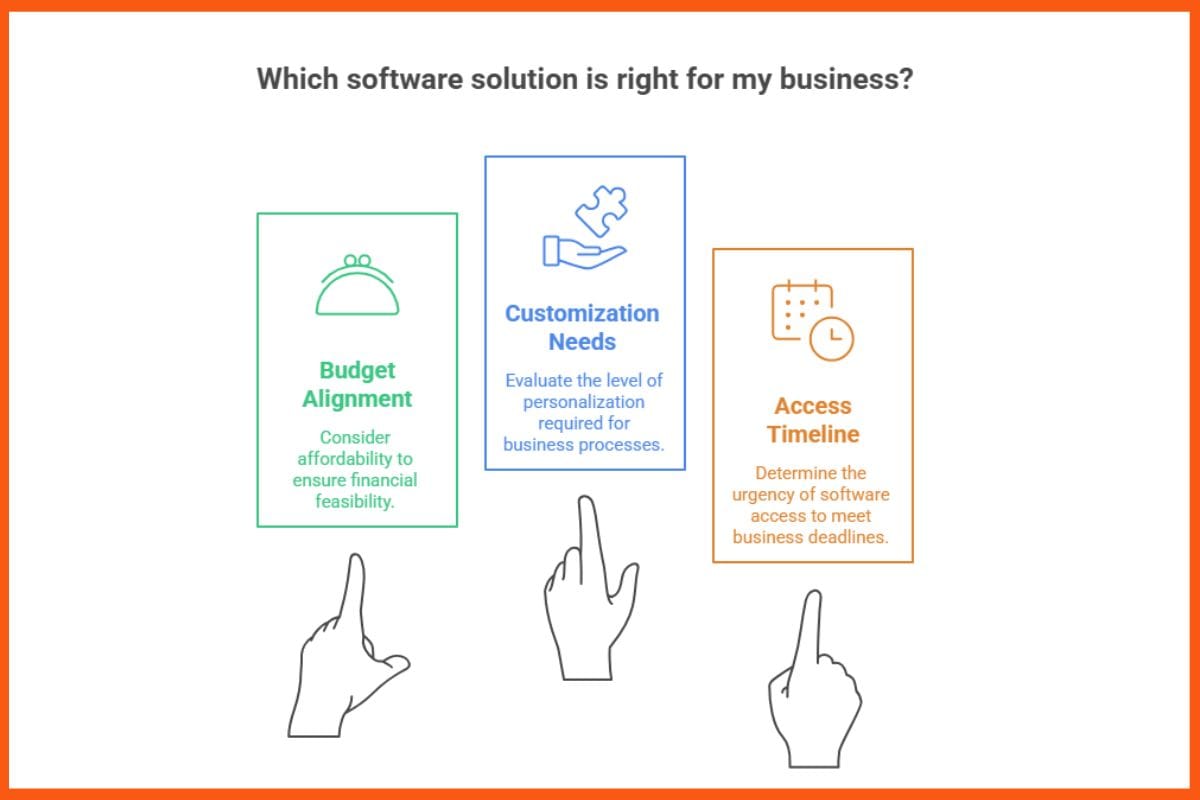This article has been contributed by Dalip Jaggi, co-founder of Revive Real Estate.
It doesn’t matter what type of business you choose to operate without technology investments; it’s likely that it won’t be able to compete with modern competition. Because of this, most organizations heavily rely on a combination of in-house and cloud-based tools to help drive their business forward.
However, as you begin to scale, there’s a good chance that those off-the-shelf applications that you use regularly may start to feel like they’re unable to keep up. While this may be subtle at first, over time, it can feel like your integrations don’t function as smoothly as they once did or that your systems are lacking in performance.
When this inevitably happens, businesses are typically left with a couple of options: either continue to invest in new, more expensive third-party tools or create their own custom solution.
When weighing this decision for your own business, there are a variety of considerations you’ll want to make before choosing one path over the other.
Why are Third-Party Software Tools So Common?
Most businesses want to maintain a certain amount of agility as they scale their operations. Cloud-based tools and systems are the perfect solution for this. Investing in solutions that are already developed and have straightforward features that businesses can use provides a highly accessible solution that most organizations can afford.
Below are some of the primary reasons why third-party software tools are so common today:
- Scalable Infrastructure: As businesses get larger, add more staff, and have more specific operational needs, it’s important that the tools they invest in are highly adaptable. Cloud-based tools and services let organizations quickly scale their infrastructure needs up or down based on their current requirements. This allows them to stay agile while gaining access to the critical resources they need to grow.
- Budget-Friendly Implementations: Most organizations have a wide range of financial tasks they need to manage. Whether needing to execute payroll processes, manage their inventory, compile financial forecasts, or file their taxes, third-party tools can help make all these processes much easier to handle.
- Improved Team Collaboration: Today, many businesses have adopted more flexible working arrangements for their employees, including fully-remote or hybrid scheduling. To facilitate this type of format, third-party solutions have become an invaluable investment that allows businesses to provide their remote employees with helpful communication and task management platforms. This enables teams to work more autonomously while still having direct access to important company resources and their management teams.

Advantages and Disadvantages of In-House Software Solutions

Although there may be a lot of advantages with third-party tools, at some point, it may become more beneficial for organizations to consider moving to an in-house software solution.
However, as with any large business investment, there are some pros and cons worth considering about an in-house solution before deciding if it’s the right choice for your business.
Advantages
- Fully-Customized Products: Purchasing a custom in-house solution for your business is similar to completing a custom home renovation project, as opposed to moving into an already designed home. While a pre-built home or design space may have some features and still be enjoyable to be in, it may not be perfectly suited to you, and you’ll have to make some sacrifices on the look and feel of the space. Similarly, when designing a custom in-house software solution, you aren’t forced to have any features you don’t want or make sacrifices on the tools you really need to operate your business more efficiently.
- Increased Shelf Life: When subscribing to various cloud-based services, businesses are often required to pay a monthly recurring subscription cost. While these costs may be nominal, over time they can add up and are the only way to gain access to all the features a business may need.
However, when building your own software solution, you’re able to have much more control over the long-term spending. This means the longer the application or system is used, the better the ROI for the business.
- Minimal Waste: Most commercially accessible software on the market advertises that it includes a large range of features or benefits that “all” businesses can leverage. However, in most cases, very few businesses actually can benefit from this full range of features as they may be designed for only certain use cases. This means that many organizations actually pay a percentage of their subscription costs for features they never get to use.
With a custom-built solution, this dynamic is much different. Since you have full control over what gets included in the development process and what gets skipped, it’s much more likely to design a solution that allows you to get full use and benefit from it.

Disadvantages
- Heavy Upfront Spending: Unfortunately, one of the biggest downsides of a custom-built software solution is its upfront costs. Just like when renovating a home, it can require a healthy budget upfront before you’re able to see any final results. Depending on how complex the project is, your initial costs may be anywhere between a few thousand to tens of thousands of dollars.
- Extended Project Timelines: Another downside of taking on a custom software build project is the timelines for completion. This can range considerably depending on the type of solution you’re looking for, but in most cases, it could take several months before you have a final working product your teams can test and use.
Key Things to Consider When Deciding What Type of Solution is Right for You

Before making the leap when deciding on the format for your next software solutions, here are a few questions you might want to ask yourself:
- What are Your Budget Limitations? Before you decide if a custom project is feasible, you need a clear picture of what you can actually afford. Map out a budget that works for your business and then see which option can align with those numbers.
- How Many Customization Options Do You Really Need? Depending on your business needs, you might find that a standard solution with minimal personalization is sufficient. But if your business needs to execute more complicated workflows or has highly specialized automation needs, then a custom-built tool may be the most logical path forward.
- When Does Your Business Need Access? Keep in mind that custom software development is a significant, long-term commitment. If your team can afford to wait several months for a new tool, then building one might not be an issue. However, if you need to use the new software within days or weeks, a pre-existing third-party option is the more appropriate choice.
Make The Right Choice For Your Business
There’s really no right or wrong answer when choosing whether or not to purchase or build your next software solutions. By evaluating the pros and cons and measuring them against your own budgets and needs, you’ll make sure you choose a solution that brings the most benefits and value to your organization long-term.

Author Information
Author Name: Dalip Jaggi
Author Bio:
Entrepreneur, technologist, and passionate business leader sum up the core of Dalip Jaggi, co-founder of Revive Real Estate, a PropTech company with a goal to democratize house flipping. Since its 2020 inception, Revive has become the smartest solution for homeowners across the nation to maximize their home’s value.
Author Headshot:
